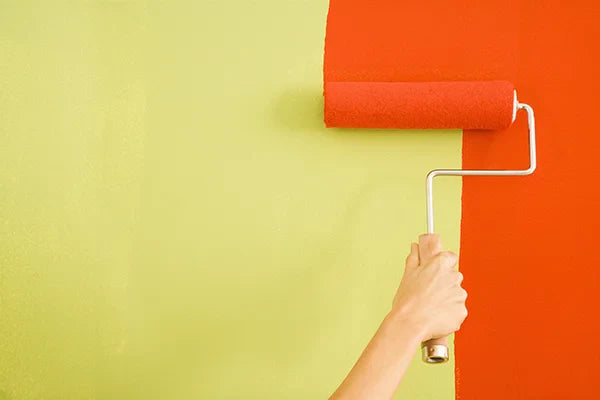Nothing ruins a fresh paint job faster than visible streaks, roller marks, or brush lines. Achieving a smooth, professional-looking finish takes the right tools, technique, and timing. At Randall’s, our experts share how to paint large surfaces—like walls and ceilings—without those frustrating marks.
1. What causes brush and roller lines when painting?
The most common culprits include:
- Using low-quality brushes or rollers
- Applying uneven pressure or too little paint
-
Overlapping dry edges (known as “lap marks”)
- Painting in high heat or low humidity where paint dries too quickly
- Not maintaining a wet edge during application
2. What’s the best type of roller to use for large surfaces?
Choose a roller nap length based on the texture of your wall:
-
Smooth surfaces: ¼"–⅜" nap for an even, thin coat
-
Lightly textured walls: ½" nap
- Rough surfaces (like stucco): ¾"–1" nap
High-quality roller covers hold more paint and distribute it evenly. Explore professional-grade rollers and brushes in Randall’s collections
3. How do I prevent roller marks on large walls?
-
Keep a wet edge: Don’t let one section dry before rolling the next.
-
Roll in full, even strokes: Start at the top and roll down in overlapping “W” or “M” motions.
-
Maintain consistent pressure: Avoid pressing too hard.
- Back-roll lightly: After applying paint, make a light pass over the area without reloading your roller.
4. Can brush marks be avoided on trim and corners?
Yes! Here’s how:
- Use angled sash brushes for precision.
- Apply paint in long, smooth strokes, not short dabs.
- Don’t overload your brush—dip only a third of the bristles into paint.
- Lightly “tip off” (smooth out) the paint before it dries.
5. How do I avoid lap marks when painting with rollers?
Lap marks occur when wet and dry paint overlap unevenly. To prevent them:
- Work in small sections.
- Always roll from wet to dry.
- Paint under consistent lighting so you can see what’s drying too fast.
- Avoid pausing for too long in one spot.
6. Does paint quality affect roller and brush marks?
Absolutely. Low-quality paints can dry too fast or unevenly, making streaks more visible.
Choose premium paints with better leveling properties—these self-smooth as they dry.
Explore Randall’s top-tier options in our collections
7. Should I use primer before painting large surfaces?
If you’re painting over a rough, stained, or uneven wall, primer helps create a uniform surface and reduces visible roller marks. Use a high-quality primer suitable for your wall type.
Need help choosing one? Visit Randall’s servicesfor expert advice.
8. How do I handle paint drying too fast?
- Avoid painting in direct sunlight or hot rooms.
- Maintain indoor temperature between 10°C–25°C (50°F–77°F).
- Use a paint extender or conditioner to slow drying time and help the paint level out.
9. Can I fix roller or brush lines after the paint dries?
Yes, but it requires a little work:
-
Sand lightly with fine-grit sandpaper.
-
Wipe clean with a damp cloth.
- Apply another thin, even coat using proper technique.
10. Should I hire a professional painter for large walls or ceilings?
For large, high, or textured surfaces, professionals ensure even coverage and flawless finishes. You can request a trusted expert through our Painter Order Form
11. How can Randall’s help with painting large surfaces?
Randall’s offers:
- Premium paint, rollers, and brushes
- Expert advice on surface prep and application techniques
- Professional painting servicesfor homes and businesses
- Personalized guidance via our Contact Us
Smooth, streak-free walls aren’t about luck—they’re about using the right tools, working steadily, and maintaining a wet edge. With a little patience and Randall’s professional-grade supplies, you can achieve that picture-perfect finish every time.
Visit Randall’s today to explore paints, rollers, and brushes designed for seamless results.
